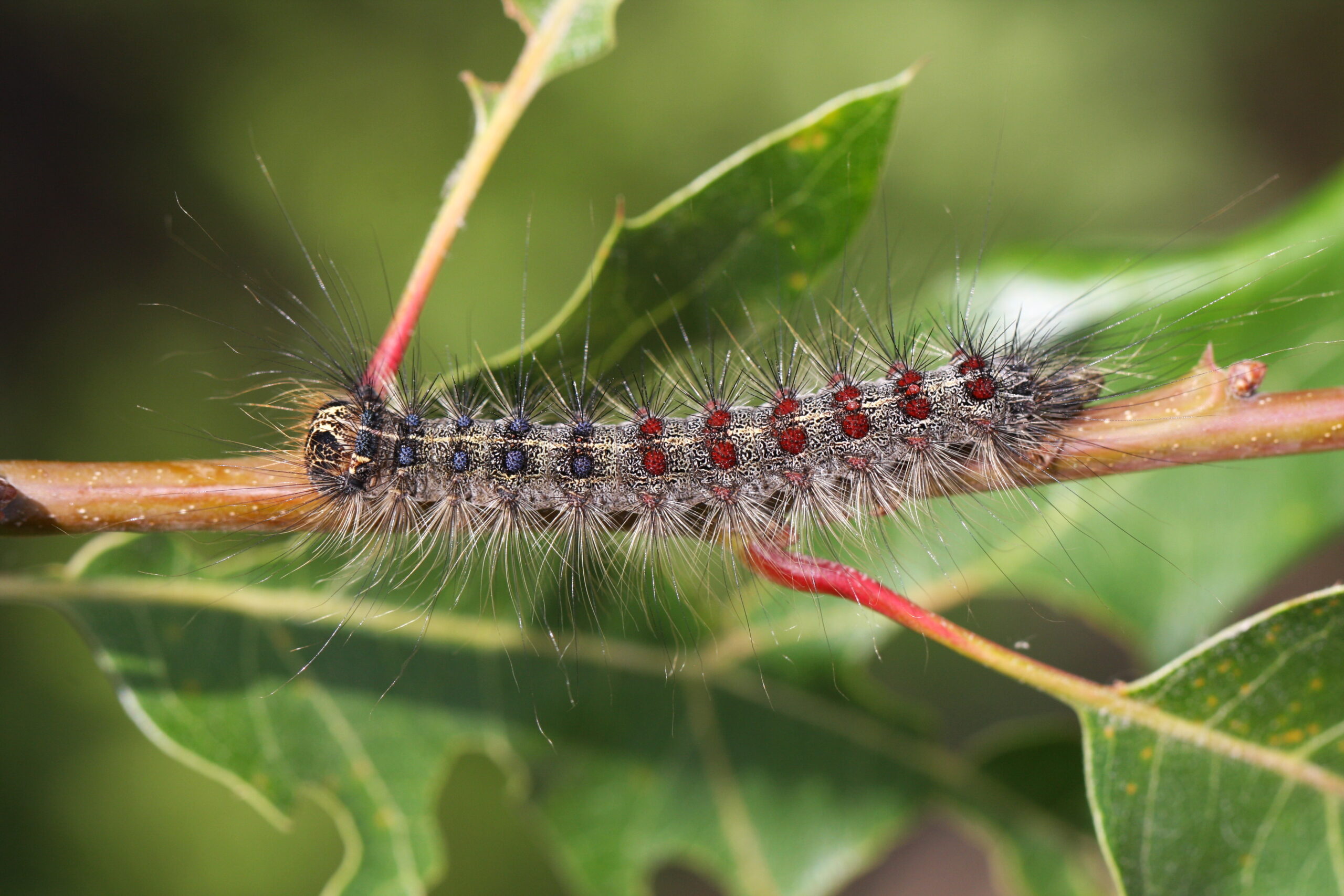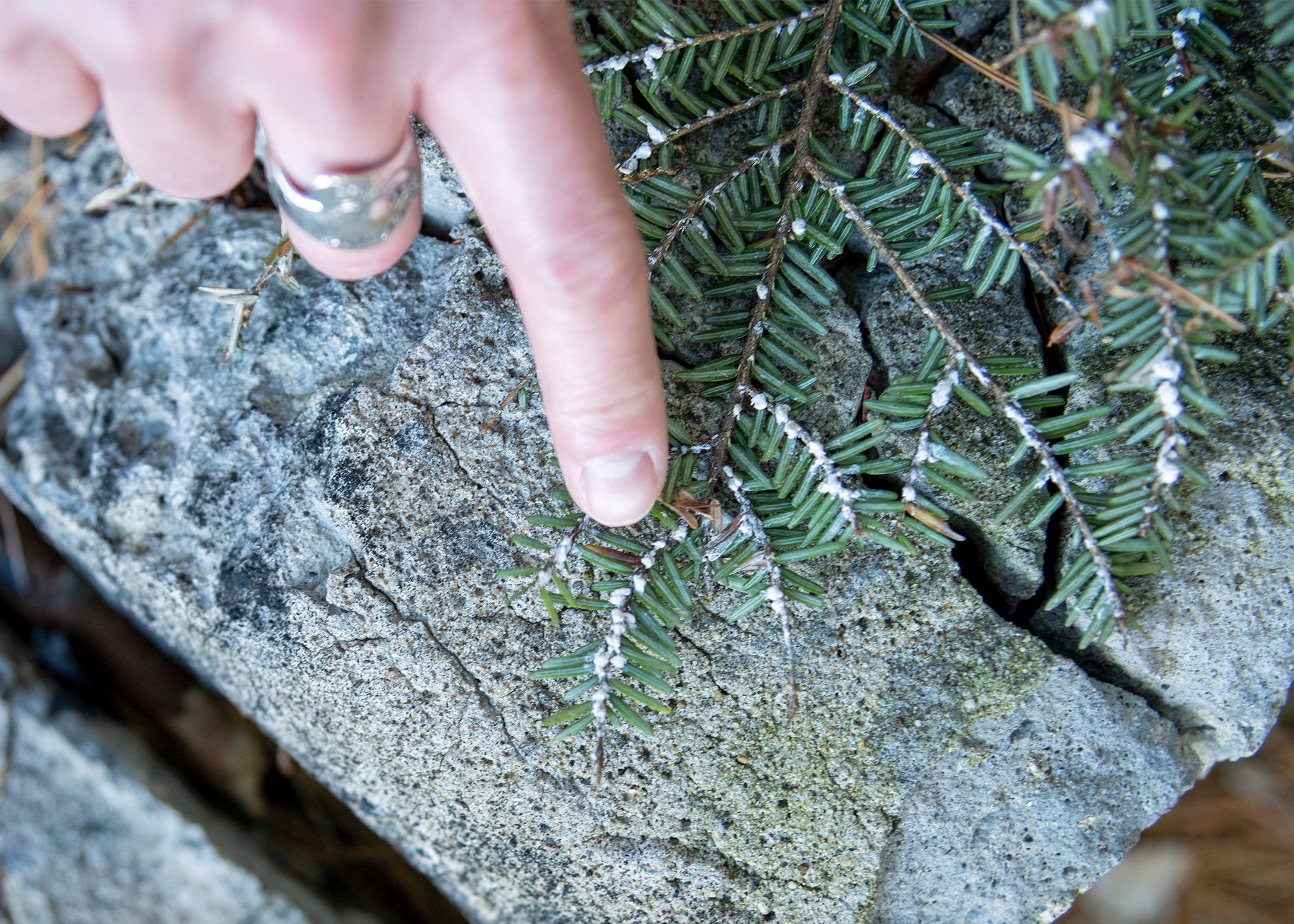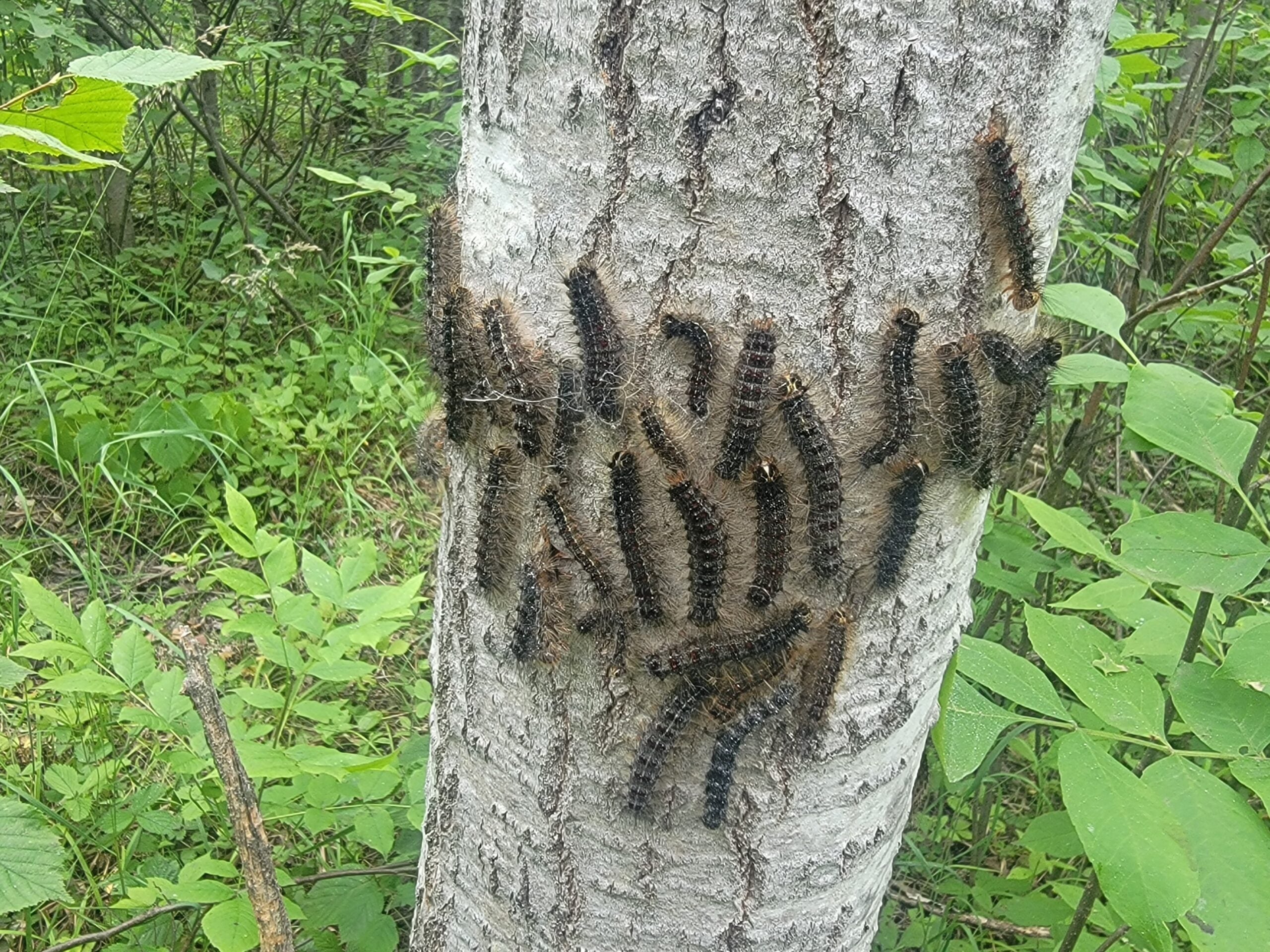Entomologists and the state Department of Natural Resources say Wisconsin could be seeing one of the worst spongy moth caterpillar outbreaks in more than a decade.
Spongy moths, formerly known as gypsy moths, are invasive insects from Europe that were introduced in the late 1800s. They are destructive as caterpillars and are voracious eaters in that stage that can completely strip leaves from entire forests.
The caterpillars feed on up to 300 species of trees and shrubs during spring and early summer. They prefer trees that are common in mixed hardwood forests, including oak and aspen. And a single spongy moth egg mass can contain up to 1,000 eggs.
News with a little more humanity
WPR’s “Wisconsin Today” newsletter keeps you connected to the state you love without feeling overwhelmed. No paywall. No agenda. No corporate filter.
Patrick Engelken, an entomologist with the U.S. Forest Service, said this is likely the worst outbreak for some areas of Wisconsin in a decade.
“I was up in the Bayfield area near the national forest last week, and there was a really heavily hit aspen stand that was just completely defoliated,” Engelken said. “There were thousands of caterpillars.”
Large areas of the Chequamegon-Nicolet National Forest have been affected by spongy moth caterpillars, especially in the Washburn and Lakewood-Laona ranger districts. In the worst-case scenario, unhealthy trees can die from stress that’s more likely to occur in drought-prone areas.
The DNR’s Bill McNee, a forest health specialist, said in an email that the state has seen at least 200,000 acres of spongy moth defoliation this year. He said that’s affected mostly aspen in northern Wisconsin, but the southern part of the state has also seen about 50,000 acres of oak that have been stripped of their leaves.
Spongy moth populations may spike temporarily about every 10 years. Outbreaks have been trending upward in the last couple of years, according to PJ Liesch, an entomologist with the Division of Extension at UW-Madison. The DNR recorded 294 acres of spongy moth defoliation in 2021, but around 85,000 acres of trees experienced a loss of leaves last year.
Liesch said weather is a key factor in the severity of outbreaks because spongy moths thrive with hot, dry conditions.
“For much of the state this year, the timing of the drought (came at) absolutely the worst possible time you could pick with regard to spongy moths, because it was very dry when the caterpillars were active,” Liesch said.
Spongy moth populations tend to be very low during wet springs because they often get sick and die from a fungal disease known as Entomophaga maimaiga that thrives in damp, rainy conditions. The moths can also die from nucleopolyhedrosis virus or NPV, which Engelken said spreads more readily through water droplets in the spring.
He added the invasive insects are typically dispersed through the wind or spread by humans because female spongy moths can’t fly. They rely on male moths to find them in order to mate and reproduce.
“And oftentimes, they get knocked off or they’re wind-blown out of the tree,” Engelken said. “They land on your camper or land on your car. That’s where they’re going to lay their eggs. And they really like to kind of wiggle and hide themselves in places where they can protect themselves from predators.”
The population of spongy moths has increased over time because Wisconsin has had a couple of years of dry springs that have allowed them to thrive. If next spring is also dry, Liesch said that could create a bad situation for forests across the state and affect trees being grown for timber production.
“If those trees keep being defoliated, that’s going to cut back on their growth,” Liesch said. “They don’t have as much energy to grow taller and bigger if they’re having to spend some energy … to regrow those leaves so they can simply survive.”
The stress on trees could also pave the way for other organisms to attack trees, including the twolined chestnut borer. The insect typically targets weaker oak trees and starts killing branches in the upper canopy.
Approximately two-thirds of Wisconsin spanning 53 counties is under quarantine regulations for spongy moth that require inspections of wood product and outdoor household items before moving them to unaffected areas, according to the Wisconsin Department of Agriculture, Trade and Consumer Protection.
The agency conducted aerial spraying this year to help slow the spread of spongy moths across roughly 90,000 acres spanning 10 counties, according to Michael Falk, the agency’s forest entomologist.
“What those all have in common is that they are more or less situated in the western part of the state where spongy moss still has not actively gained a foothold,” Falk said. “So those sprays are intended to prevent it from establishing populations out in that corner of the state.”
He said a nationwide effort has helped slow the spread of spongy moths 87 percent, and the agency sets around 10,000 traps each year to track their movement.
The Division of Extension at UW-Madison has a guide for homeowners on how to manage spongy month on their properties.
Wisconsin Public Radio, © Copyright 2025, Board of Regents of the University of Wisconsin System and Wisconsin Educational Communications Board.





